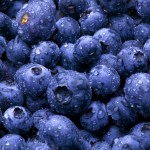As the kids get ready to head back to the classroom, get a jump start on boosting your diet with one or more of these “brain food” items:
RAW UNSALTED WALNUTS – Walnuts have been around for millions of years and have been deemed by historians as a prehistoric food used by hunter-gatherers. In recent studies, walnuts have been called “brain food.” In particular, walnuts are rich in nutrients and are filled with minerals, vitamin E, and antioxidants. Unlike other nuts, walnuts contain omega-3 fatty acids and alpha-linoleic acid. Omega-3s are an essential fatty acid that your body does not produce naturally and can only be acquired through diet. Omega-3s play a vital role in healthy brain and nerve function. Walnuts are also rich in protein and fiber and help lower cholesterol.
A handful of raw nuts are a much healthier late-night snack than a bag of chips or a slice of pizza. Nuts and seeds also make great snacks to keep in your purse to munch on in between classes, when you have to go longer periods between meals, or when you have back-to-back classes.
QUINOA – The Brain Grain – Quinoa is perfect for the busy college student. It only takes 20 minutes to cook. It’s highly nutritious and can supply you with all of the body’s requirements: carbohydrates, fats, protein, vitamins, minerals, and fiber. While most grains are deficient in the amino acid lysine, quinoa has an adequate quantity of lysine and contains all the essential amino acids, making it a complete protein.
Quinoa is said to have the ability to help improve memory. It is rich in folic acid, zinc, vitamin E, and iron. Quinoa is gluten- free and considered an ideal food for those prone to food allergies. I also love quinoa because it can be paired with anything. I love adding quinoa to my salads. Because it is a complex carbohydrate, it will fuel you with consistent energy and get you through a long day of studying.
APPLES – When in season, apples make a wonderful snack not just because they are tasty but also because they help fend off degenerative diseases like Alzheimer’s. This is because the skin of apples is rich in antioxidants, minerals, and most importantly a nutrient called quercetin. Quercetin is even more powerful than vitamin C when it comes to fending off disease. It is classified as one of the many flavonoids that give plants their color and are potent antioxidants that help neutralize free radicals in the body. Next time you’re running to class and need a snack along the way, throw an apple in your bag!
RAW ONIONS – I love adding them to salads with fresh greens or to my homemade guacamole. Once you cook onions, the natural enzymes with amazing healing properties are destroyed. Like apples, onions contain flavonoids, in particular a flavonoid called fisetin that is found in fruits and vegetables. Studies have shown that fisetin helps improve memory by alerting pathways that boost long-term memory. In addition, onions are also wonderful for building connective tissue in the skin, such as collagen.
ORGANIC BLUEBERRIES – Berries are truly a beautiful superfood. They are rich in antioxidants and protect the brain against memory loss. Blueberries are the best source of antioxidants; in a study conducted at Tufts University, sixty fruits and vegetables were analyzed for antioxidant potential, and blueberries were ranked as the highest.
Alexandra Catalano, creator of the popular Eat Cute lifestyle brand (www.eatcute.net), Certified Health Counselor, and author of “From Beer Pongs to Broccoli: The College Kids Guide to Health and Wellness.”





